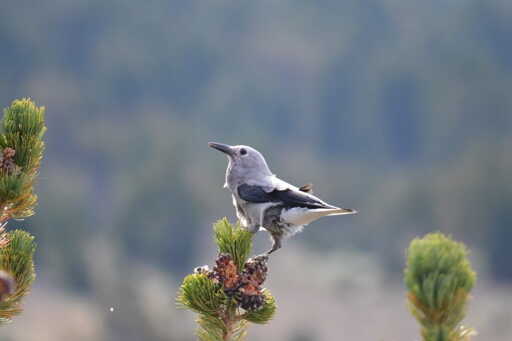Hotter and drier conditions could whittle away 80% of land where whitebark pine grows by the middle of this century, according to a recent study. Scattered across the highest parts of the Rocky Mountains, the Cascades and the Sierra Nevada in the western U.S. and southwestern Canada, the species is a linchpin of alpine ecosystems. But now, “It’s basically just being pushed off the mountain,” said Sean Parks, a research scientist and the paper’s lead author. “There’s nowhere for it to go.” The work was published in the journal Environmental Research Letters. The research also projects that protected areas — places like Yellowstone, Mount Rainier and Yosemite national parks and the designated wilderness around them — will cover three-quarters of the territory best suited for whitebark pine. While such locations could help safeguard existing stands, rules and policies around human interventions in these spots could also snarl restoration efforts. Whitebark pines (Pinus albicaulis) can tower to 18 meters (60 feet) or more, while others carve out a stunted existence known as krummholz — German for “crooked wood” — growing only about hip-high on the harshest, most windswept slopes. Whitebark pine, pictured here in the Mammoth Lakes region of the eastern Sierra Nevada. Image courtesy of D.F. Tomback. Across its range, this pine shades and anchors snowpack, slowing its melt and stabilizing the precious provision of water throughout the summer for plants, animals and people. And the thick-scaled, purple-hued cones the tree produces offer valuable sustenance to wildlife as diverse as…This article was originally published on Mongabay
From Conservation news via this RSS feed


